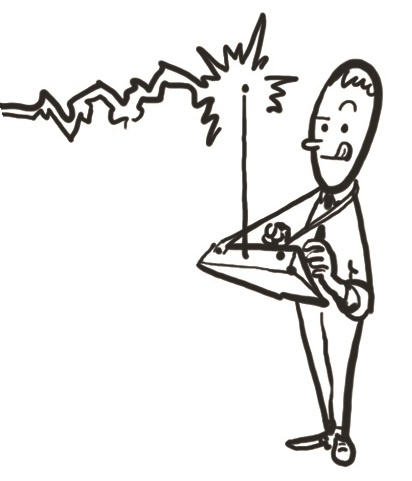 Frequently, potential customers never get to see you deliver your presentation. In only 1 in 4 opportunities will you get to make a face-to-face presentation and even then some key decision makers will not be present. Most people will see (and hopefully read) your presentation as an attachment to an email.
Frequently, potential customers never get to see you deliver your presentation. In only 1 in 4 opportunities will you get to make a face-to-face presentation and even then some key decision makers will not be present. Most people will see (and hopefully read) your presentation as an attachment to an email.
That means to be effective your presentations have to be self-explanatory. You have to make a convincing presentation - but by remote control.
I recently had the great pleasure of meeting Carsten Leminsky of steercom. He is widely acknowledged as a leading expert in building presentations that achieve their communication goal and I am happy to share some of the key lessons he taught me about making remote control presentations.
Pyramids, stories and logical chains
The first thing is to make your key message clear in the 1st slide. Think of this as the top of the pyramid, the rest of the pyramid is all the arguments that support this initial claim. Then add increasingly detailed levels of argument to back it up as you go through the presentation. In best case, many people will be convinced long before the end.
For instance, this is the key message at the beginning of a presentation I am currently working on – “Only by implementing a sales excellence program will XYZ achieve its 20% annual growth target.” – This promise immediately creates attention if it’s designed to answer the main question your recipient has in mind. In this case the buyer wants to know “How can I achieve my ambitious growth targets?”
The next thing Carsten suggested is to tell a story. Very specifically he says the slide headers should all be complete sentences which, when read one after the other, tell the full story. The idea is that the reader can just read the headers and get the full story, and when they see a header that interests them, they can read down for more detail.
The next key thing is to use more logical chains; they look like this: Your key message is questioned “Why?” and you have to overcome this scepticism with some arguments on the next slides e.g.
(1) You are a challenger in your market competing against better known brands.
(2) But, your new solutions create an opportunity to grow faster.
(3) To exploit this opportunity it is important that you upgrade your sales process.
(4) We propose the following 10 improvements to achieve your growth goals.
(5) These improvements will bring the following benefits.
It sounds simple, but many presentations just list product features without linking them to benefits that relate directly to the customer.
Most presentations do not work in remote control
Carsten was kind enough to show me a presentation he was working on. It was a very large software proposal for a giant US retailer and he showed me a series of errors that he was working on with his client to sort out.
Firstly, they had too many ‘reasons for change’ before they even started presenting the solution. But the customer had already acknowledged the need, so a quick reminder would have been sufficient. Reduce to the max.
The next error, which many people make, is to bury the key selling point. In this case it didn’t turn up until slide 23! A lot of people won’t make it that far into the presentation. Less is more.
Another issue in this presentation was too much data and not enough of what he calls ‘so what’. For instance, if you say ‘Our software can do XYZ’ then you have to say ‘So, what that means for you is savings of $123m in 18 months’. If features do not directly benefit the customer, leave them out.
Another thing Carsten highlighted was that people focus too much on the graphic design. It certainly helps if a slide deck looks nice. A well designed presentation will make a good initial impression and raise people’s expectations of the overall quality of the content, but graphic design will do nothing to hold their attention or convince them to buy if the content is flawed. Content is king.
A good remote control presentation
To sum it up: Your presentation has to be so clear and concise that you take the reader through it by remote control. It has to grab the reader’s attention, tell a story, make good logical arguments why the reader should buy from you and back those arguments up with evidence - then have a clear call to action.
Ask yourself when you build your next presentation
- Am I clear about what the recipient wants to know?
- Does my first slide show how my proposal meets that need?
- Does the rest of my presentation tell a story using logical arguments to back up that claim?
